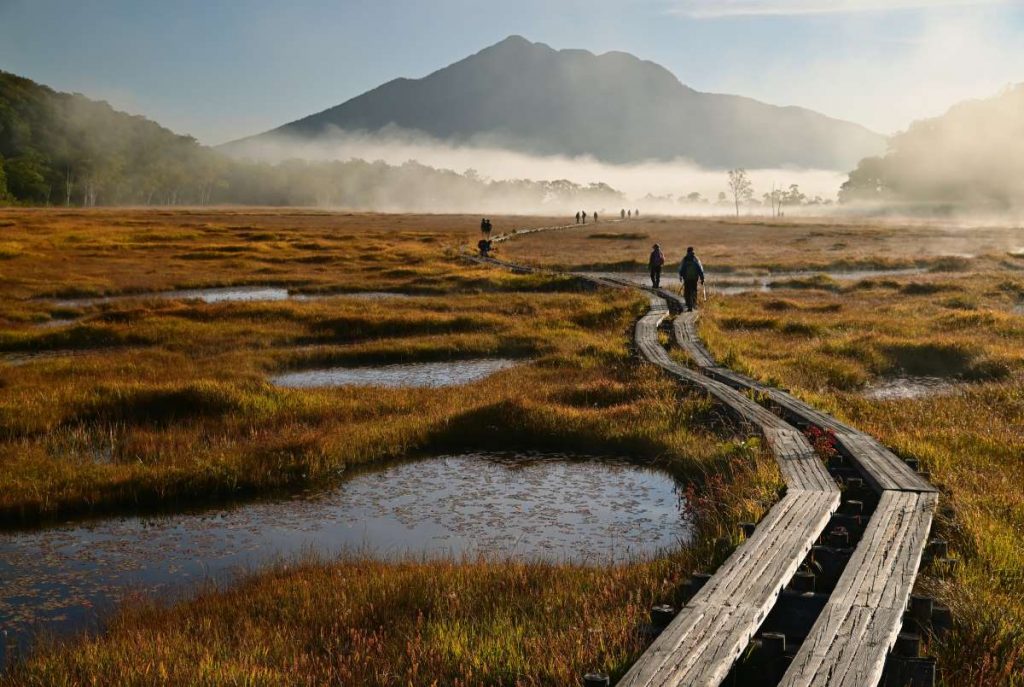このページを 日本語 で読む
The marshland glows golden in the mist of the early morning sun. Hikers on the wooden boardwalks enjoy beautiful autumn scenery.
Oze National Park spans the four prefectures of Fukushima, Gunma, Tochigi, and Niigata. Its landscape encompasses the high moor of the Ozegahara Plateau and Lake Ozenuma. The surrounding mountains, bitter winter cold, and abundant water sources come together to create a unique landscape and a treasure trove of alpine flora.
While many may know of Oze, the man and botanist who protected it from development may not be so well known. The 50th anniversary of the death of Hisayoshi Takeda (1883-1972) has just passed.
Young Botanist Enthralled with Oze
Born in Tokyo as the second son of Ernest Satow, a British diplomat, Takeda was interested in plants and mountain climbing from a very young age. He went on to study botany in England and later was employed as a lecturer at the former Kyoto Imperial University and Hokkaido Imperial University.
He visited Oze for the first time in 1905 at the age of 22. He wrote in his travelogue, "I was astonished by the incomparable scenery…I have never seen anything like it." Through his impassioned writing, he spread the name of Oze throughout the world.
Due to the abundance of water in Oze, proposals to develop hydroelectric power generation were repeatedly made during the first four decades of the 1900s.
When asked to cooperate with the local people to the project, Takeda signed on. He conducted scientific surveys and contributed to newspapers and magazines, repeatedly appealing to the rareity of the landscape, thereby preventing the construction of the dam. When the construction of an expressway was considered, Takeda objected.
For his ongoing protection of the landscape from the standpoint of a researcher, Takeda came to be known as the 'Father of Oze.' Oze also became known as the birthplace of the nature conservation movement in Japan.
Carrying on the Legacy
Noriko Hirano, 81, third-generation caretaker of the Chozo Hut, a mountain lodge that worked together with Takeda to protect the mountain, remembers the last years of Takeda's life.
"He had a rough side and was often blunt, but at heart he was a kind English gentleman," she reminisces. Ms. Hirano fondly remembers how Takeda would pick up trash with the tip of his cane when he came to the site to conduct fixed-point surveys.
Half a century has passed since Hisayoshi Takeda departed this world.
Spared from development, Ose now boasts roughly 65 kilometers of wooden boardwalks. Prior to the pandemic, approximately 250,000 people visited the area annually.
Although the increase in visitors has caused various issues, such as providing toilets and garbage disposal, Hirano believes that Takeda would be "happy that more and more people have come to love Oze."
I hope that those who love Oze also continue to protect it and uphold the legacy of the Father of Oze.
このページを 日本語 で読む
